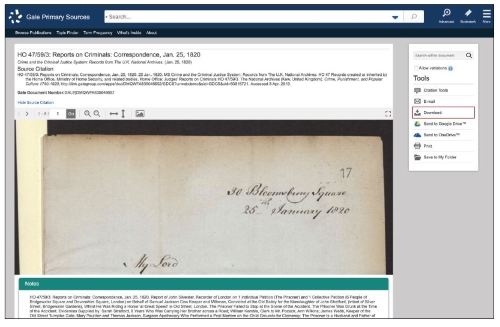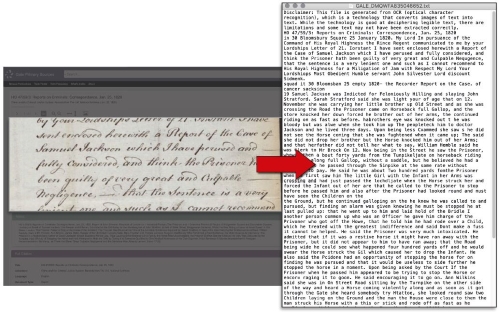What used to happen?
For many years, the machine-created transcription produced by Optical Character Recognition (OCR) technology has made it possible to search the full text of typed documents. OCR technology cannot be applied to handwritten documents, due to the greater level of variation in written characters. Handwritten sources in Crime, Punishment & Popular Culture have previously been discoverable—but based only on their metadata (summary information). Whilst the full text of typed documents was searched, only the metadata of handwritten documents was searched. As a result, numerous relevant documents may not have appeared in a user’s search results.
What happens now?
With Gale’s game-changing Handwritten Text Recognition technology, the full text of all handwritten documents in Crime, Punishment & Popular Culture has been digitally transcribed prior to the user’s search, meaning the full text of all documents in the archive is searchable from the user’s initial query.



